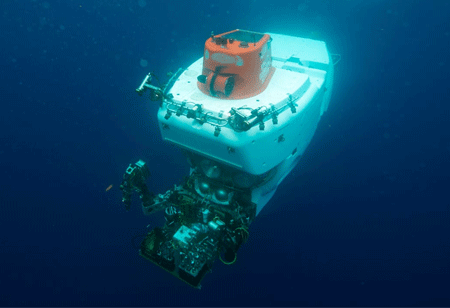THANK YOU FOR SUBSCRIBING
How is Data Accuracy Rigging the AI Systems in Ocean Studies?
The increasingly affordable availability of capacity and computing power to analyze and store data have assisted in the palpable bloom of artificial intelligence (AI) in marine geomatics and ocean sciences.

By
Apac CIOOutlook | Monday, August 19, 2019
Stay ahead of the industry with exclusive feature stories on the top companies, expert insights and the latest news delivered straight to your inbox. Subscribe today.
Various external factors have always hindered the success of AI in ocean studies. The most prominent is the quality and quantity of data. Will it make a difference if all types of data, from all qualities and quantities, are utilized for studies?
FREMONT, CA: The increasingly affordable availability of capacity and computing power to analyze and store data have assisted in the palpable bloom of artificial intelligence (AI) in marine geomatics and ocean sciences.
Calibration points are necessary to validate the reliability of the powerful mathematical models. Similarly, AI cannot emulate and learn properly if the technology cannot depend on the observations that depict reality. In the commercial shipping sector, AI-based technologies are being tested with results depicting an additional bathymetry and hydrography needs that are quickly becoming essential and critical.
Commercial Marine Autonomous Surface Ships (MASS) prototypes are now in development and will eventually be tested in the near future. Many have identified these commercial MASS as providers for economies in terms of fuel consumption, optimization of routes, reduction of greenhouse gas emissions and reduced risks while navigation by compliance to many rigid and strict rules of navigation.
But how can a commercial MASS be taught? If indeed they possess the ability to learn, from the charted and uncharted seas, where hydrographic data is inaccurate or even absent? The success of AI in hydrography relies on the fundamental dependency on all the available data. Especially, bathymetric and hydrographic data in any quantity and quality, whether static, predictive, or real-time.
Lack of Basic Data:
In the domain of ocean sciences, there is a deficiency of primary data that matches up to the modern technological standards. However, the data collected with multibeam echo sounders (MBES) for some decades are regionalized and have become increasingly dense than ever. Also, the excess data obtained from MBES and precisely its multiplier effect of the backscatter data signal and the Lidar and Satellite-Derived Bathymetry (SDB) multiplier effect of reflectance data signal amplifies the density much further.
Since AI runs on the foundation of computing ability, equipped with the power of mathematics and statistics, the line-up of all data, especially big data, enacts a vital role in computing, Machine Learning, and deep learning.
Respecting Established Standards:
AI in hydrography will be enthused and catalyzed by MASS. The key to success is based on the fundamental issue known in hydrography for a long time, which is the associated bathymetric and hydrographic data of standard quality and respecting established standards. A significant challenge is represented by considering that the majority of the world's oceans and coastal areas have little or no modern hydrographic data of sufficient quantity and quality. However, there are ample opportunities with the existing technological wave that is being experienced at present.
To be on the safer coast for hydrographic AI, it is necessary to obtain the maximum quantity of data where the quality levels up to known standards. Even if the data does not meet the criteria, it is better than not having the data, or having just a little data.
Alternative Data Sources:
In the context of promoting and utilizing the Crowd-Sourced Bathymetry (CSB) and the unreserved use of alternative data sources such as Satellite-Derived Bathymetry (SDB), autonomous data acquisition vehicles, Airborne hydrographic Lidar; airborne (drones), surface and submarine, is a compulsion, which is accelerated now more than ever.
For hydrographic data, ideally, the most accurate and exact information is required. On the other hand, in the context of AI in hydrography, all data should be of interest. Rather than being obsessed with precision, data should be accepted for which the accuracy and precision would be insufficient for conventional standard purposes. By knowing the precision and efficiency, the data will allow the machine and deep learning algorithms to work in areas of risk to avoid for some current and future MASS.





